The Ha Giang Loop is a stunning, multi-day motorbike road trip through the rural mountains of northern Vietnam. Using a clear travel rating system, I share the experience is like—plus tips from my own trip.
Lists By Lukiih is readers-supported. When you buy with my affiliate link, I may earn a small commission. Thanks!
🍀 Lukiih’s Verdict
The Ha Giang Loop was my trip’s most memorable experience and I consider it a travel highlight.
- It’s a bucket list item for adventurers who want to pass through epic mountain views, rivers, and villages.
- The experience is affordable, even after accounting for accommodation, transportation, food, attractions, and a driver.
- Moderate preparation is required, as you need to book in advance, pack accordingly, and travel far from Hanoi to reach the starting point.

🇻🇳 Planning A Trip To Vietnam: 12 Practical Things To Know
🏆 Where Does It Rank?
The Ha Giang Loop ranks as the #1 experience I had in Vietnam. Here’s how it compares to other things I did on my trip:
⛰️ 10 Epic Days in Vietnam: A Unique & Active Itinerary
✈️ About My Trip
For context on my review, here’s what to know about my trip:
- I finance my trips and don’t receive sponsorship; this review reflects my honest opinions.
- I did the Ha Giang Loop in 2022, but this post has updated 2025 information.
- My Vietnam trip was in October when it was more crowded and expensive.
- The Ha Giang Loop is a very rare experience. It’s near impossible to find a multi-day motorbike loop that offers this combination of remote ethnic minority cultures, karst mountain landscapes, cliff-hugging roads, and minimal commercialization. You’ll have eye-opening moments on how the Hmong people live.
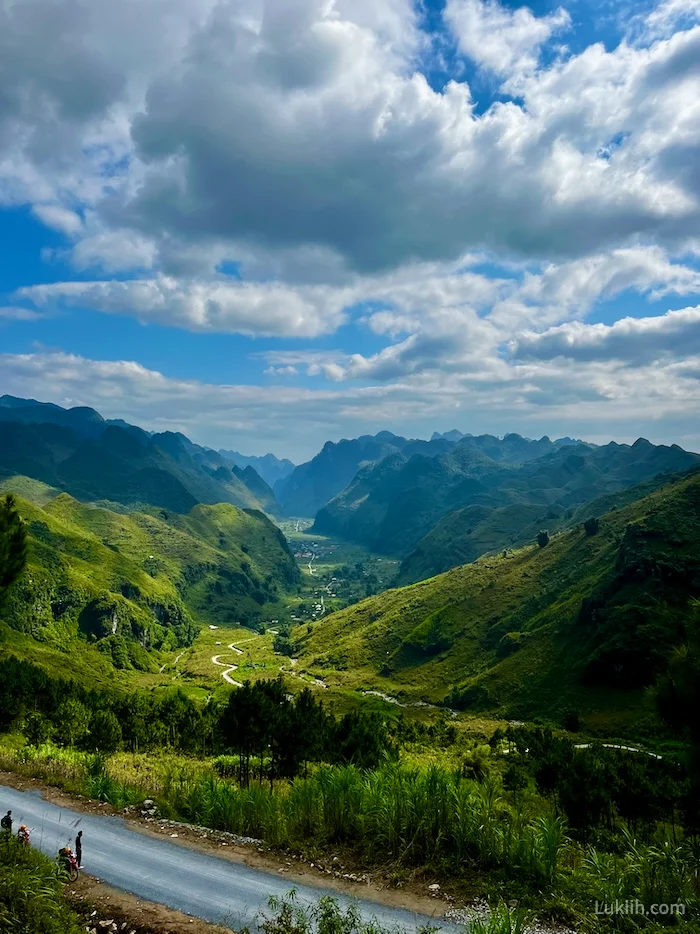
- The loop is located in the mountains, where the weather conditions can vary and change rapidly, so you may experience rain, fog, and cold temperatures that cover the views and make the experience less memorable.
Read on for the best time to do the Ha Giang Loop.

- The route has thrilling, winding, narrow roads in the mountains, and you can experience it safely with an expert local driver (also called an “easy rider”).
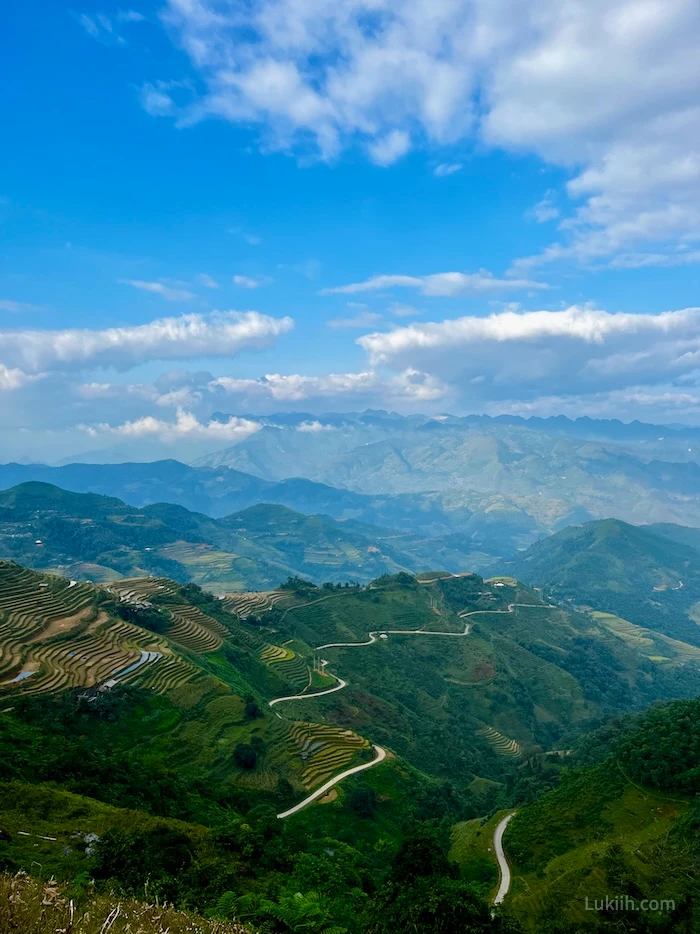
- It’s a multi-day trip, so you can bond with other travelers and drivers in a way that’s less likely on shorter tours.
- You’ll have multiple chances to interact and learn about the ethnic Hmong communities, making the experience more rewarding. During my tour, I stayed at a homestay, learned about traditional handcrafted hemp fabrics, and ate local food.
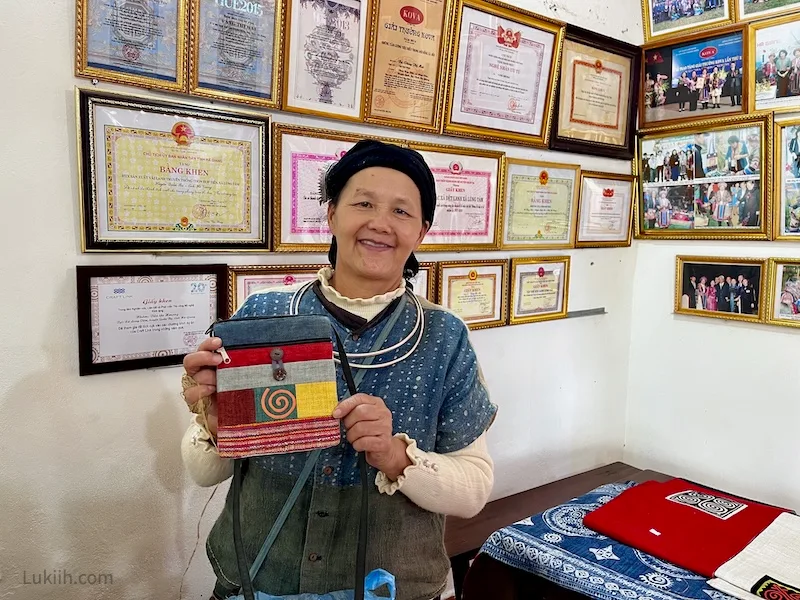
- Sitting on a motorbike for multiple hours a day will make your butt and knees very sore.
- The loop has risks. Injury, and even death, is not unheard of, especially in recent years, as more inexperienced motorbike drivers do the loop.
See below for risks on the Ha Giang Loop.
The most convenient and safest way to experience the Ha Giang Loop is through an organized tour group, which typically costs between $230 and $270. The tour lasts three to four days and includes meals, transportation, gear, and accommodation.
I booked my tour with Cheers Hostel and paid $230 during the high season. This tour included an experienced “easy rider” for me to ride with. Prices of other well-rated tour companies:
- Ha Giang Adventure: $270 for 4 days self-drive
- Authentic Ha Giang: $265 for 3 days with an easy rider
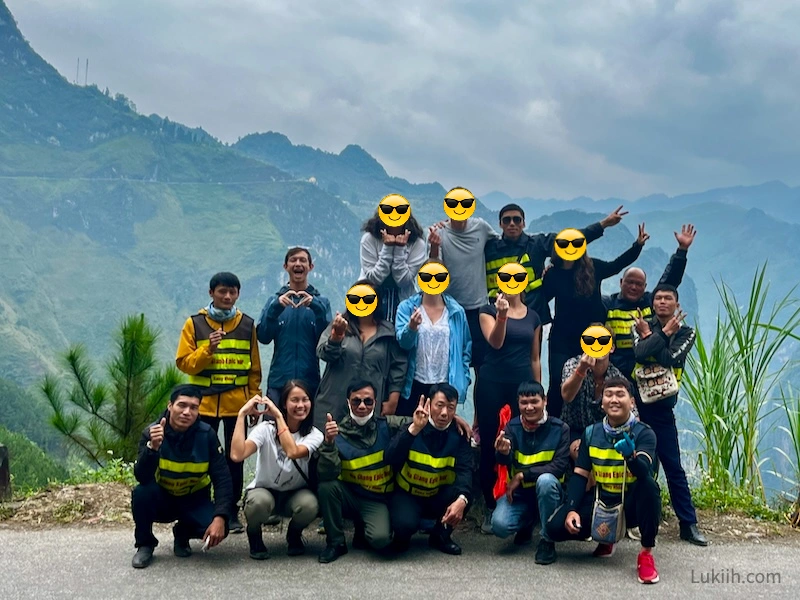
💰 My Vietnam Trip Cost: Budget Breakdown (2025)
- You don’t need specific skills if you ride on the back of an “easy rider.” If you drive yourself, make sure you have significant motorbike experience to avoid injury. Scroll down for the different ways to do the Ha Giang Loop.
- The Ha Giang Loop starts in Ha Giang City, which is located north of the capital city of Hanoi. You’ll need to take a vehicle to reach Ha Giang City. The ride from Hanoi takes about 6 hours, so it’s a long journey.
- If you’re not driving, reserve your spot on an organized tour two to three weeks in advance. If you’re driving yourself, you’ll need to reserve a motorbike rental and accommodation. Don’t underestimate mountain weather, and pack accordingly. You’ll need to fit everything into a backpack tied to the back of a motorbike.
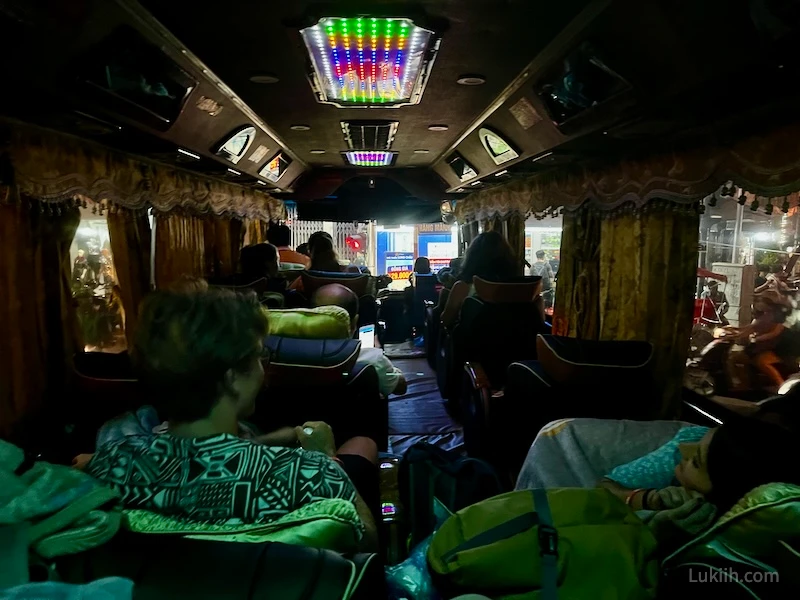
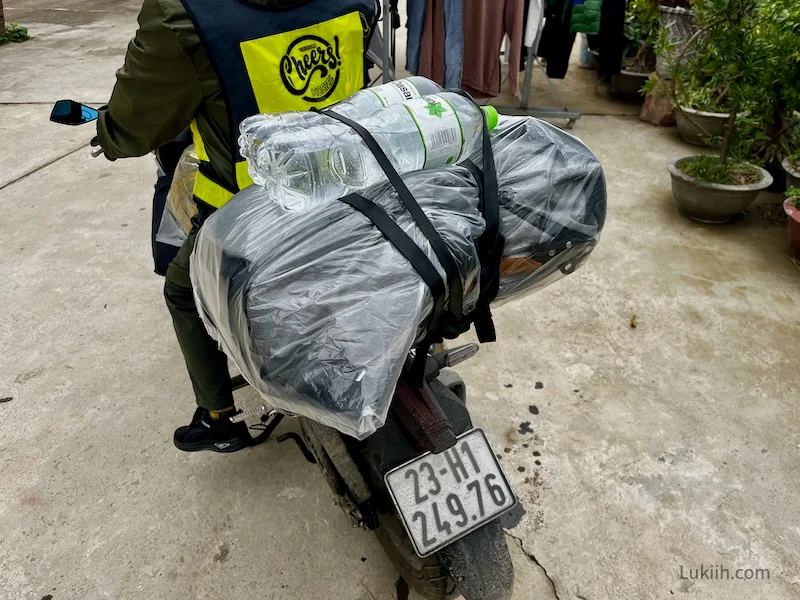
How To Guide & Tips
Interested in doing the Ha Giang Loop after reading my review? Below is a practical how-to guide and firsthand tips.
Map
This map shows key places of the Ha Giang Loop, divided by a typical three-day trip:
The loop takes you through several districts:
- Dong Van – known to have unique geological features.
- Yen Minh – home of several Hmong communities.
- Meo Vac – home of the scenic Ma Pi Leng Pass.
- Quan Ba – home of the panoramic Heaven’s Gate.
Best Time
The best time to do the Ha Giang Loop is in the spring (March to May) when the weather is pleasant and dry. I did the loop from late October to early November and experienced a mix of rainy and warm, sunny days.
Remember that weather conditions on the loop constantly change and can be unpredictable in the mountains.
The loop is in northern Vietnam, which has a tropical climate that follows a dry season and rainy season:
| Season | Months | Temperatures |
|---|---|---|
| ❄️ Winter (Dry & Cool) | Dec–Feb | 50–70 °F |
| 🍃 Spring (Dry & Pleasant) | Mar–May | 60–76 °F |
| ☀️ Summer (Hot & Humid) | May–Aug | 85–100 °F |
| 🍁 Fall (Rainy & Warm) | Sep–Nov | 75–85 °F |
How To Do It
You can travel the Ha Giang Loop in three ways:
- 🏍️ Driving yourself – You’ll have to first get to the starting point, Ha Giang City, by sleeper bus or van, rent a motorbike, and plan the loop, accounting for stops, lodging, food, and safety.
Given the risk of injury or even death on the Ha Giang Loop, you should only drive a motorbike if you’re very experienced.
- 🏍️ Motorbike tour – The quintessential way to do the loop is by motorbike, and you can do this safely with a tour that provides experienced drivers (called “easy riders”).
- 🚙 Car ride tour – You can also visit the loop by booking a car tour if sitting on a motorbike doesn’t sound appealing.
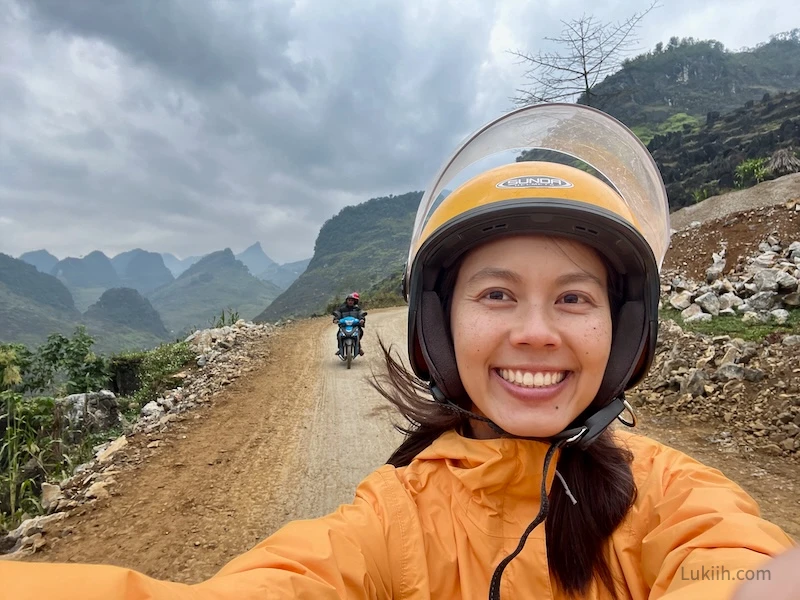
Is It Safe
The Ha Giang Loop is safe for very experienced motorbike drivers, but it is not safe for beginners to drive on their own.
Beginner drivers or people with no motorbiking experience should ride with experienced drivers provided by tour groups.
Here are some of the risks you can run into when driving the loop:
- 🩹 Accidents – Accidents are not uncommon. My tour group saw an accident in which a visitor had to be taken to a hospital four hours away after crashing their motorbike into the side of the mountain.
- 😑 Harassment – The loop can get pretty empty, but it’s also crowded enough that you shouldn’t have issues with harassment. That said, there’s never a guarantee. I rarely saw visitors driving alone, but several couples did it independently.
- ☠️ Deaths – Though rare, there have been several reported deaths, usually due to reckless driving or simply due to insufficient attention being paid to the surroundings.
Should You Drive
Only experienced drivers should drive themselves on the Ha Giang Loop. Here are three things to consider if you’re wondering whether to drive or ride on the back of an easy rider:
- Motorbike experience – Driving a motorbike on the loop is chaotic and not the same as driving one on big highways or quiet streets.
- Challenging road conditions – You should be comfortable with these road conditions:
- Blind turns – The majority of the route has winding and looping roads, some of which are very narrow (fitting only two motorbikes side-by-side) and some with blind turns.
- Bumpy, unpaved roads – Sometimes, you will drive over a pile of rocks or construction materials.
- Aggressive drivers – You’ll have to give way to aggressive passing vehicles that will honk at you until you let them pass.
- No guardrails – A few portions of the loop have winding roads with little or no guardrails next to steep drops.
- Sleek roads and low visibility – The roads become slippery when it rains and gets foggy in the mountains.
- Steep inclines and sharp turns – Many parts of the route feature steep roads and sharp turns.
- International Driver’s Permit – Like the rest of Vietnam, whether you will be asked to show an IDP or not is up to chance.
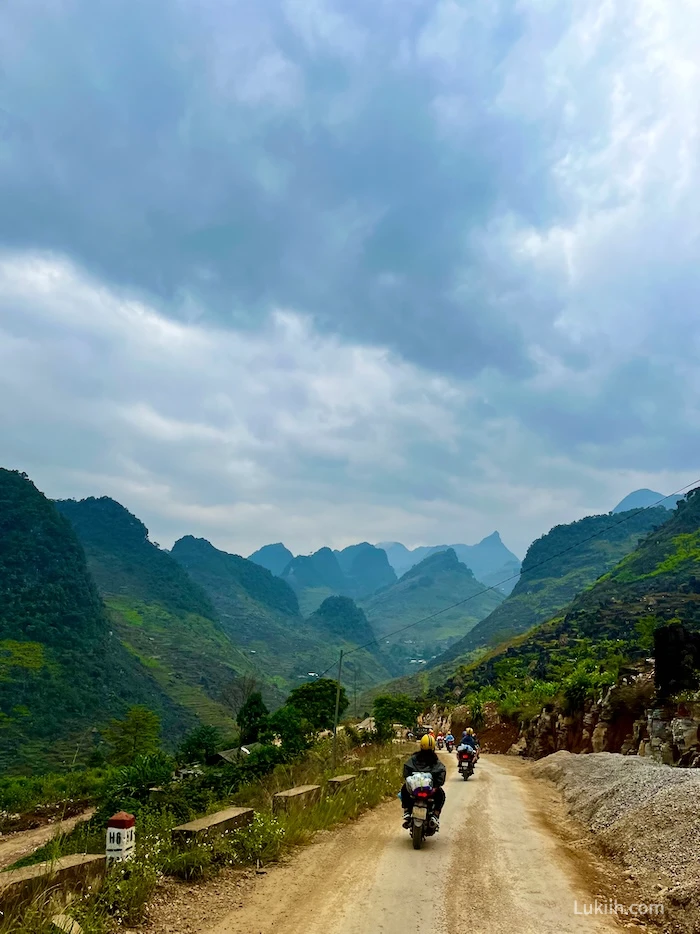
Accommodations
You will find different types of accommodation on the Ha Giang Loop: homestays, motels, and hostels. I stayed at all three, and here’s what you can expect:
- All accommodations provide free Wi-Fi, outlets, traditional meals, and hot showers.
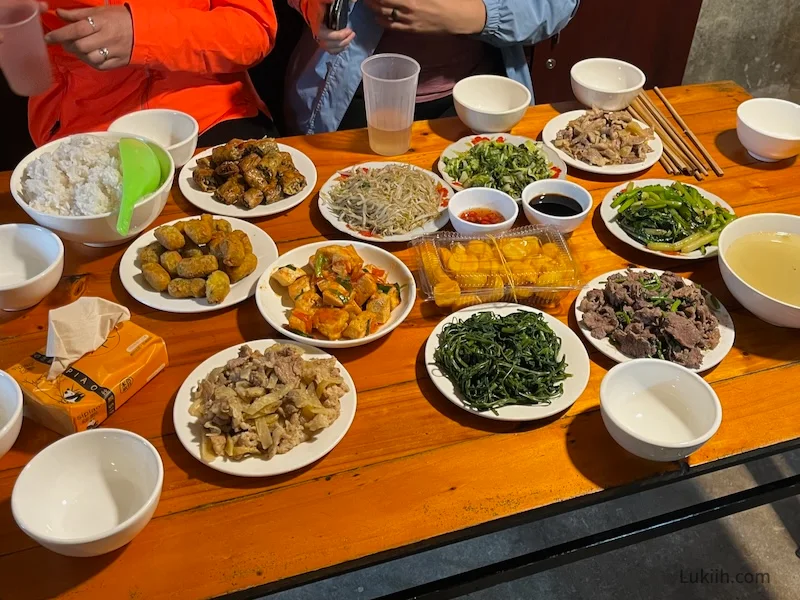
- The most unique accommodation is a homestay, which is typically a big, open, two-story cabin-like home belonging to a local family.
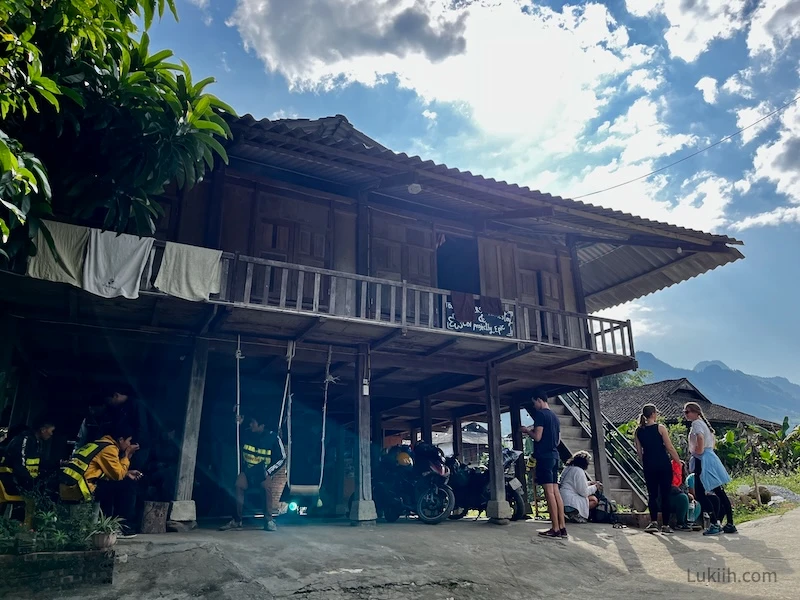
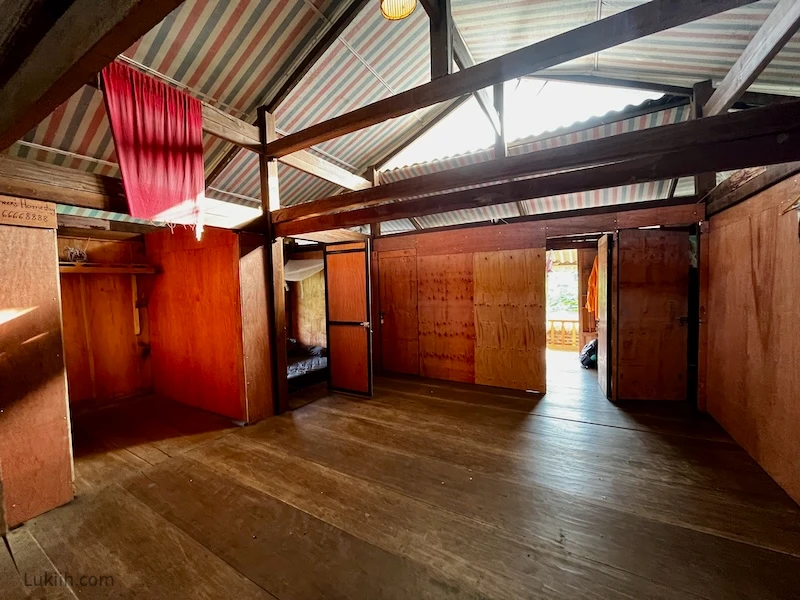
- When staying in a hostel, note that not everyone in the room is part of the same tour group, so keep your belongings close to you.
What To Pack
While on the Ha Giang Loop, your belongings will be carried on a motorbike. You’re limited to a backpack tied to the motorbike, so you should only bring what you need.
The Vietnam trip planner below has this packing list in a downloadable Notion.
- Hiking shoes or sneakers – You’ll need a comfortable pair. Some roads are muddy and dusty, so be prepared to get them dirty.
- Sandals (optional) – You’ll potentially want sandals for the bathrooms and for swimming in a waterfall, if you stop at one. I brought my Chacos, which were fine, but I would recommend something that dries out easier.
- Rain jacket – A rain jacket will not only protect you from rain but also from the wind and the cold. I brought my Columbia rain jacket, which was a great addition.
- Top (1-2 pieces) – Wear something comfortable, as you’ll sit in it for hours. I brought an athletic tank and a cotton shirt.
- Pants and/or shorts (1-2 pieces) – Bring shorts and/or pants that you’ll be comfortable sitting in for hours. I brought my light hiking pants, which were perfect for the changing weather.
- Underwear (3+ pairs) – There are no laundry services, so pack enough underwear for the entire three- to four-day road trip.
- Socks (2-3 pairs) – Your shoes and socks will get dusty while riding on the loop, so bring enough socks for a fresh pair every day.
- Pajamas – Bring a set of clothes that you’ll sleep in.
- Bathing suit – You’ll need a bathing suit if you plan to swim in a waterfall.
- Backpack – Bring a bag that can hold everything and fit on the back of a motorbike. I brought my Patagonia 25L backpack, which was a great size for me.
- Small bag – Your backpack will be inaccessible during the drive, so you’ll want a pouch, shoulder bag, or fanny pack to carry your phone, cash, sunglasses, etc. I bought this crossbody phone pouch specifically for this trip.
- Sunscreen – You’ll be outside for many hours and exposed to the sun. This is a sunscreen I discovered in Asia and love.
- Toiletries, including body wash – Many accommodations are simpler and don’t have soap or shampoo available.
- Bug repellent – The loop is home to plenty of disease-carrying mosquitos. I get bitten often, so I bought and used this insect-repellent lotion daily.
- Ear plugs and/or sleeping mask (optional) – If you’re a light sleeper and your accommodation is shared, you might want to bring earplugs and a sleeping mask.
- Sunglasses – I didn’t use my sunglasses, but many in my group did and highly recommend sunglasses for eye protection.
- Cash (small bills) – Almost all snack stops along the way will only take cash. Some bathrooms will also require coins. You’ll also want cash for tipping.
Tipping may be uncommon in your culture, but remember that most guides and drivers are farm workers from remote villages around the Ha Giang province. A tip can help them feed their families.
- Power bank – All my accommodations had an outlet, but if you use your phone a lot for videos or photos, you’ll likely run out of juice during the day.
- Quick dry towel – You’ll need a quick dry towel if you plan to swim in a waterfall or stay at a hostel that doesn’t provide towels.

Cold Weather Packing
If the weather forecast shows very cold weather during your Ha Giang Loop ride (below 45 °F), you might also want to bring the extra items below.
I packed all of these things during my October to November road trip, but I ended up using none of them because the weather held up in terms of temperature.
- A light, packable puff jacket or sweater to layer on top
- A hat or headband that you can wear underneath the helmet
- Gloves to protect your hands from wind and rain
Vietnam Trip Planner 2025
Make planning easier with my flexible, research-backed travel planner—shaped by real experience. It has:
- Up-to-date travel info
- A well-curated itinerary
- Practical, firsthand insights & tips
- A simple budget tracker
- A starter packing list
- Fully customizable sections
Built in Notion, this is the tool I personally use to plan every trip. I genuinely love it and creating a Notion account is free.
Lists by Lukiih is a small site I fund myself. Downloading my trip planner is the best way to support me and keep it running—thanks!
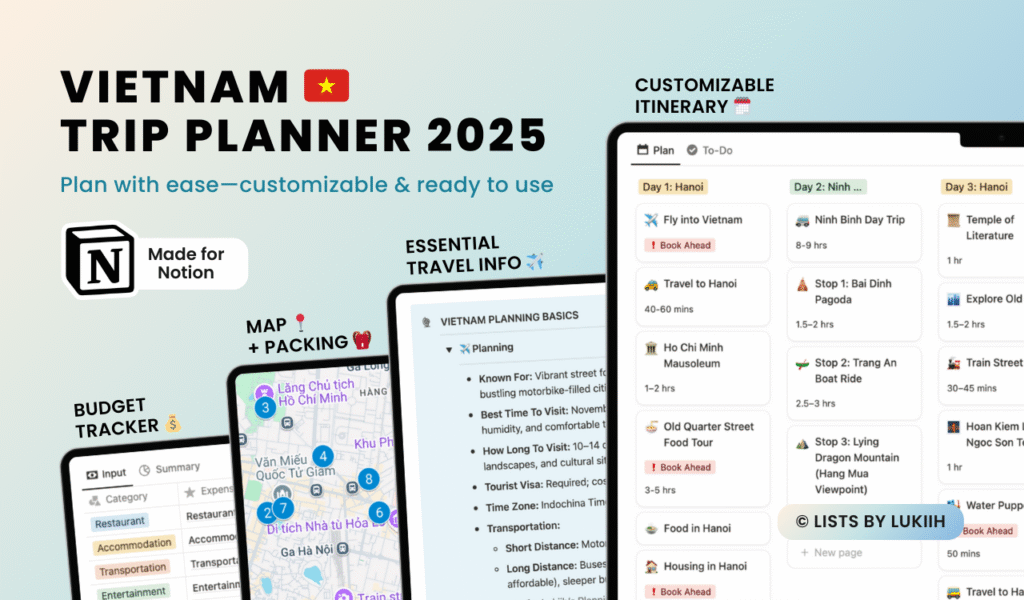
Vietnam Travel Guides
- 🇻🇳 Planning A Trip To Vietnam: 12 Practical Things To Know
- ⛰️ 10 Epic Days in Vietnam: A Unique & Active Itinerary
- 💰 My Vietnam Trip Cost: Budget Breakdown (2025)
- 🍜 Hanoi Guide: 14 Great Things To Do, Eat and Skip
- 🏍️ Ha Giang Loop: Firsthand Review & Tips
- 🧗♀️ Deep Water Solo in Vietnam: Firsthand Review & Tips
- 🏮 Hoi An Guide: 11 Great Things To Do + 3-Day Itinerary
- 👗 My Hoi An Tailor Experience: Prices & What To Know
